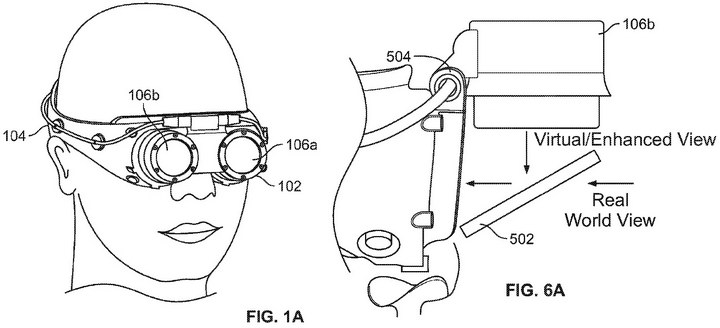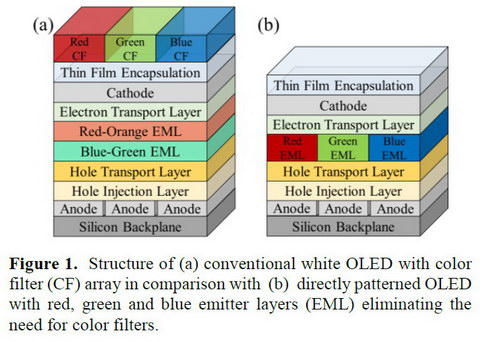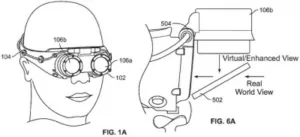eMagin Corporation is a company that specializes in the development, design and manufacturing of OLED on silicon microdisplays that target the Head Mounted Display (HMD) market. The main target market for these devices is the US and allied military applications, as shown in the image from their home page, www.emagin.com.

 eMagin emphasizes military applications of its OLED on silicon microdisplays
eMagin emphasizes military applications of its OLED on silicon microdisplays
While most of eMagin’s market is OLEDs for military applications, their devices are also suited for other systems as well, as shown in their application chart.
| Applications | Military | Law Enforcement & Rescue | Medical | Industrial | Consumer Electronics |
| 3D Training / Simulation | X | X | X | X | X |
| Remote Presence | X | X | X | ||
| Enhanced Vision/Night Vision | X | X | X | ||
| High Definition Video | X | ||||
| Video Surveillance | X | X | X | ||
| Avionics | X | X | |||
| Extreme Environments | X | X | X | ||
| Real Time Microscopics | X | X | |||
| Data Monitoring | X | X | |||
| Inspection | X | X |
The majority of HMDs for either military or civilian applications are designed for either Virtual Reality (VR) use, with the outside world obscured and where the wearer can only see the information displayed on the HMD or Augmented Reality (AR) use where the displayed information is overlaid on an image of the outside world.
On June 14th, eMagin Corporation was granted a patent by the US Patent and Trademark Office, US 9,366,871, titled “Microdisplay Based Immersive Headset.” This patent discusses a system where the same HMD with the same OLED microdisplays and other electronics can be used in either a VR mode or and AR mode, simply by flipping up the optical assembly, as shown in the image.

In figure 1A, the optical assembly is shown flipped down. In this case, the opaque OLED on silicon microdisplays (106a and 106b) obscure the user’s vision and the system is in VR mode. When the optical assembly is flipped up, as shown in Figure 6a, a beam combiner (502) comes into the optical path to combine the real world view with the virtual world view. By also moving the beam combiner out of the way, the wearer would have a completely unobscured view of the real world.
There are a total of 28 claims in the patent. Claim 1 reads:
1. An immersive headset device comprising:
a body portion adapted to be worn on a head of a user;
a display portion movably attached to the body portion, the display portion comprising at least one display and adapted to transition between a VR mode and an AR mode,
wherein, (i) when the display portion is in the VR mode, the display is in a line-of-sight of a user, and (ii) when the display portion is in the AR mode, the display is displaced from the line-of-sight of the user while providing an image to the user.
Claim 16 is the only other independent claim and it is similar to Claim 1 except it is a method claim, not a device claim. Note that while eMagin is strictly a OLED company, this claim would also cover a similar design using a LCD device.
In a related matter, at SID in San Francisco this June, eMagin presented a technical paper (62-1) and demonstrated a working microdisplay that was based on direct patterning of RGB OLED materials. (See the Meko special report on SID 2016, subscription required) Previous eMagin microdisplays have used white OLED material and RGB color filters. The display demonstrated at SID was a 1920 x 1200 resolution device with a 0.86” (21.7mm) diagonal giving a total 2645 PPI. Each 9.6 micron pixel was made up of three 3.2 micron x 9.6 micron subpixels.

One advantage of the high pixel pitch and small diagonal of the microdisplay, according to eMagin, is that it allows a very lightweight and compact HMD. Another advantage of the new design is it is able to achieve very high brightnesses, since it does not include RGB color filters that throw away about 2/3 of the light generated by the OLEDs. The new full color directly patterned display (DPD), designated OLED-ULT by eMagin, is said to produce 4,500 cd/m². eMagin’s Senior VP of R & D, Dr. Amal Ghosh, told Meko at SID that eMagin was working to increase this output to 10,000 cd/m². This extremely high brightness will be especially useful in AR applications of the OLED-ULT, including dual AR/VR applications as described by the patent. While VR applications rarely need this level of output, images generated in AR applications must compete with very high levels of ambient light to be visible, requiring very high output levels from the microdisplay. Think of the Iraqi desert in the noonday sun. –Matthew Brennesholtz

